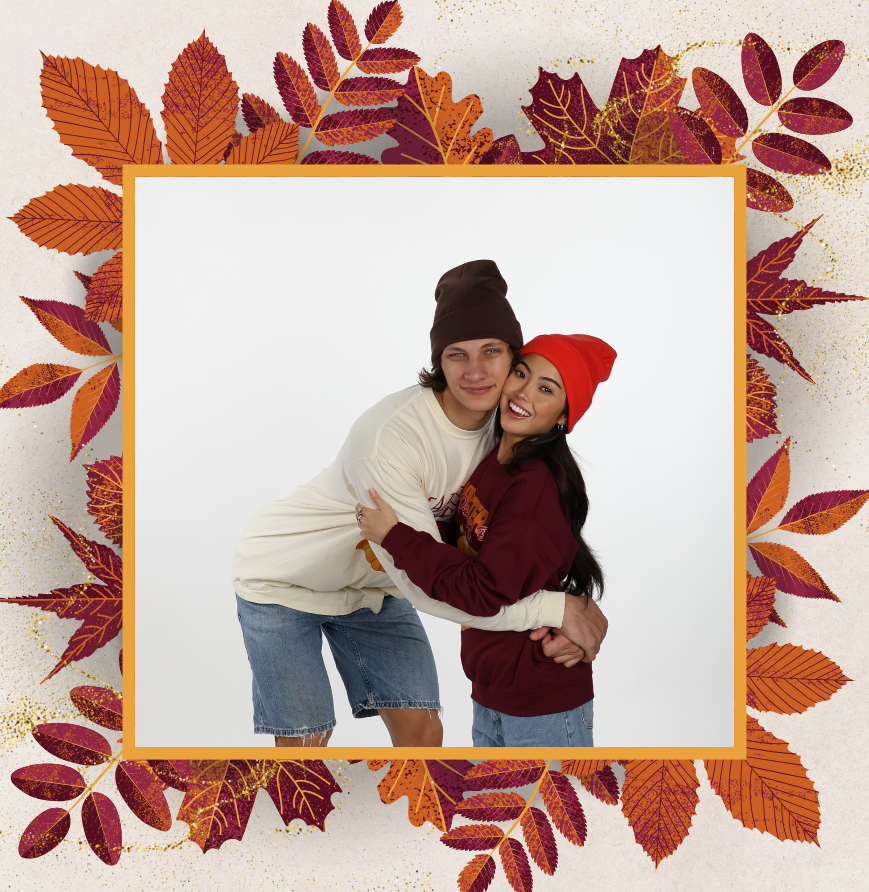

Posted by AllDayShirts on to Printing Techniques., Product Guides
Before we get into application methods, it’s important to understand the fabric itself. Acrylic is a synthetic fiber designed to mimic the warmth and softness of wool without the itch. It’s durable, lightweight, and resistant to shrinking, which makes it ideal for knit hats.
However, when it comes to decoration, acrylic has some challenges:
Heat sensitivity: Acrylic fibers can scorch, melt, or become shiny if exposed to excessive heat.
Stretch factor: Knit fabric stretches, which can cause rigid print transfers to crack or peel.
Textured surface: The ribbed knit pattern means designs may not lay completely flat, especially if they include fine detail.
This doesn’t mean DTF is impossible—it just requires careful technique and managed expectations.
If you’re set on using DTF transfers for acrylic beanies, here’s a proven process that helps achieve the best results: (We do not recommend dtf on these beanies)
Prepare the beanie: Place a pressing pillow or pad inside the beanie to create a flat pressing area. This prevents seams or folds from interfering with pressure.
Clean the surface: Use a lint roller to remove dust or fibers. Any debris can interfere with adhesion.
Press settings:
Temperature: 280–290°F (lower than standard cotton settings to avoid scorching).
Pressure: Medium to firm, ensuring the adhesive penetrates the knit texture.
Time: 12–15 seconds.
Peel: Allow the transfer to cool completely (cold peel is safest). Slowly peel the carrier film at a sharp angle.
Second press: Cover with parchment or a Teflon sheet and repress for 5–7 seconds to lock in adhesion.
When applying DTF transfers to acrylic beanies, technique matters as much as temperature. If you’re new to DTF or want a refresher on application methods, check out our in-depth guide: Do You Press DTF with the Image Face Up or Down? A Complete Guide for Beginners and Pros. It breaks down pressing orientation, peel methods, and pro tips to help decorators avoid common mistakes.
By combining these insights with beanie-specific adjustments—like lowering the temperature slightly and using a pressing pillow—you’ll maximize adhesion without damaging the acrylic knit. Most of the time the knit will be damaged.
Full-color, detailed designs possible.
No digitizing costs (compared to embroidery).
Faster turnaround for small runs.
Less durable than embroidery—will crack or peel over time. Will hurt the fabric of the beanie
Designs don’t stretch with the knit fabric.
Works better with bold, simple graphics rather than small text.
When it comes to beanie decoration, embroidery has long been the gold standard. Here’s how the two methods compare:
If your customer is looking for longevity and premium appeal, embroidery will always outperform DTF on acrylic beanies.
We highly recommend embroidery and not DTF on these beanies.
When deciding how to decorate, the choice of blank beanie matters just as much as the decoration method. Let’s look at two of the most popular options:
The Afton 5-SK is a standout choice for decorators and brands seeking a retail-quality beanie.
Fabric: 100% premium acrylic
Style: Cuffed design for extra warmth and branding space
Fit: Structured yet comfortable, offering a high-end look
Colors: Wide range of bold, modern shades
Why decorators love it: The cuff provides a perfect canvas for embroidery, making it easy to place logos or initials. While DTF can work, the tight weave of the acrylic tends to get damaged during the heat transferring process.
Whether you choose DTF or embroidery, keep these best practices in mind:
Choose bold designs: Simple, high-contrast logos hold up better on textured knits.
Avoid fine detail: Tiny text or thin lines may get lost in the ribbed surface.
Mind the placement: The cuff area is ideal for logos, while the crown of the beanie can distort designs.
Test first: Always run a sample before committing to a large order.
When brainstorming designs for acrylic beanies, think beyond just logos. Seasonal patterns, minimalist icons, and even fun novelty graphics can look great when adapted for DTF or embroidery. For more creative ideas, check out this collection of beanie designs on Tip Junkie. It’s packed with inspiration that decorators can adapt to fit branding projects or retail-ready styles.
Pairing fresh design inspiration with the right decoration method (DTF for color, embroidery for durability) ensures your acrylic beanies stand out in any season.
Use DTF if: The customer is giving these away and does not worry about the fabric getting damaged or the quality. More of a donation.
Use embroidery if: The customer wants a retail-quality finish, long-lasting durability, or branding for corporate uniforms and cold-weather gear.
By offering both options, you give customers flexibility while guiding them to the method that best fits their goals and budget.
Yes, you can heat press beanies with DTF or HTV, but temperature control is critical since acrylic can melt if overheated. Most acrylic will end up melting and hurting the color.
With proper application and gentle care (hand washing, air drying), DTF transfers can last several months. However, embroidery generally lasts the lifetime of the beanie.
Embroidery is the industry standard for a professional, durable finish, especially on premium styles like the Afton 5-SK.
No it’s best for embroidery.
So—can you DTF on acrylic beanies? Absolutely, but with caution. The process works but it ruins the fabric at the end of the day. For long-lasting, professional branding, embroidery remains the top choice, especially on premium beanies like the Afton 5-SK Premium Cuffed Knit Beanie.
Budget-friendly options like the Knit Cap are great canvases for either method, depending on the customer’s needs.
By understanding the strengths and limitations of each decoration technique, decorators can offer the right solution to every customer—whether they want a fast, colorful promo item or a timeless, retail-quality winter accessory.